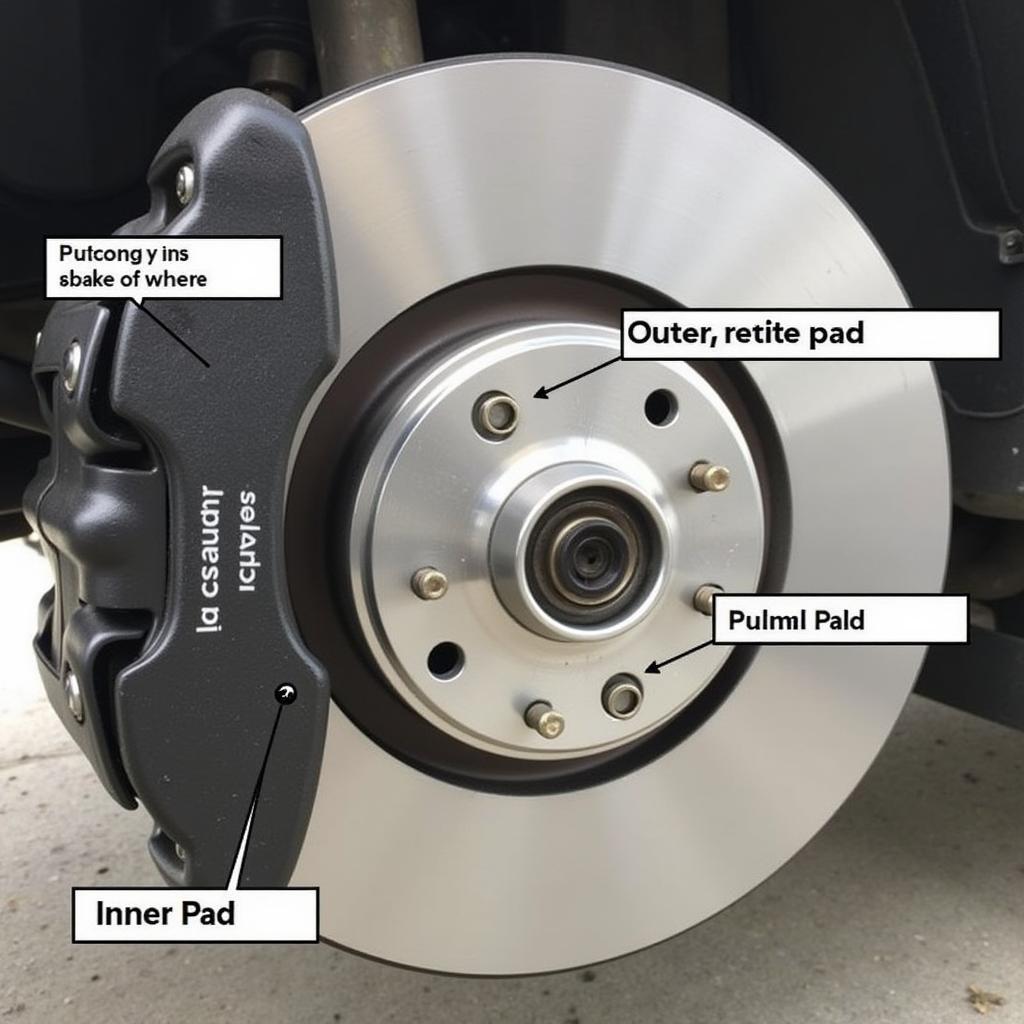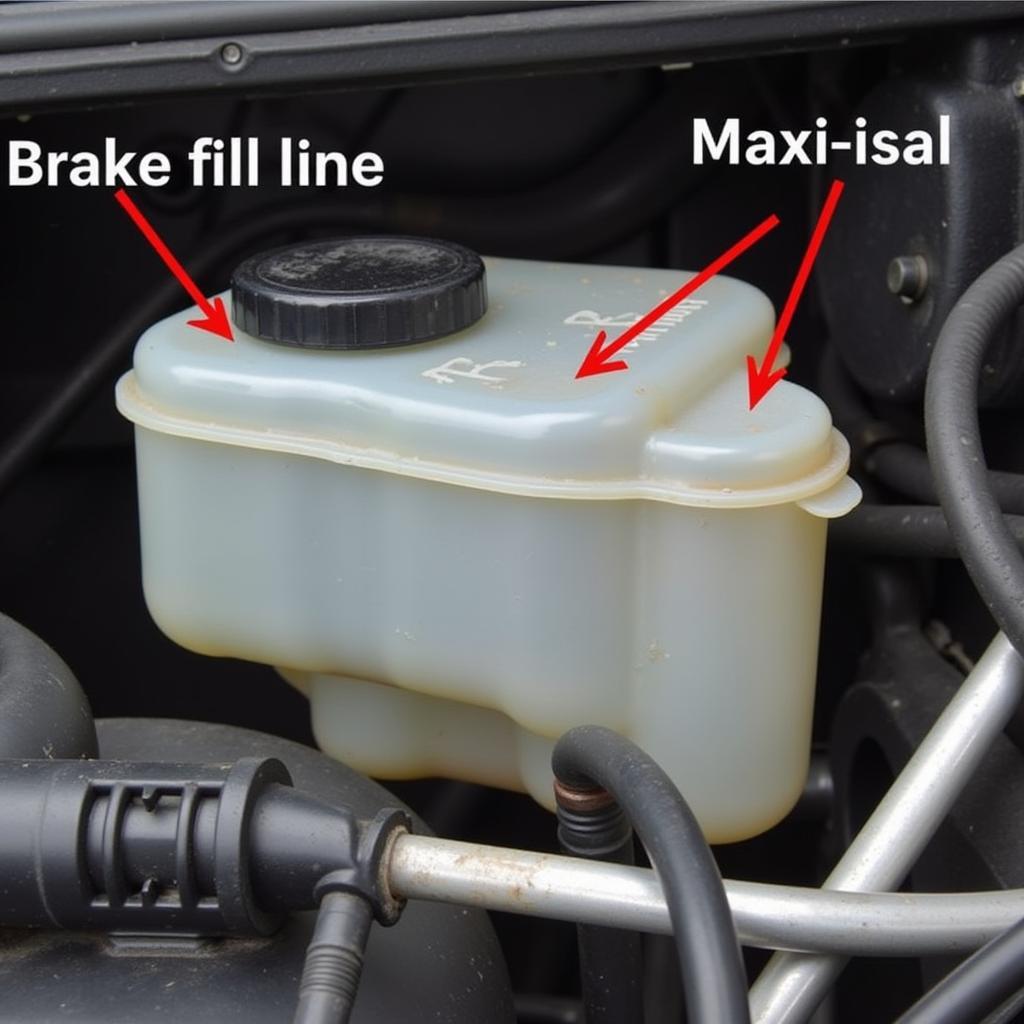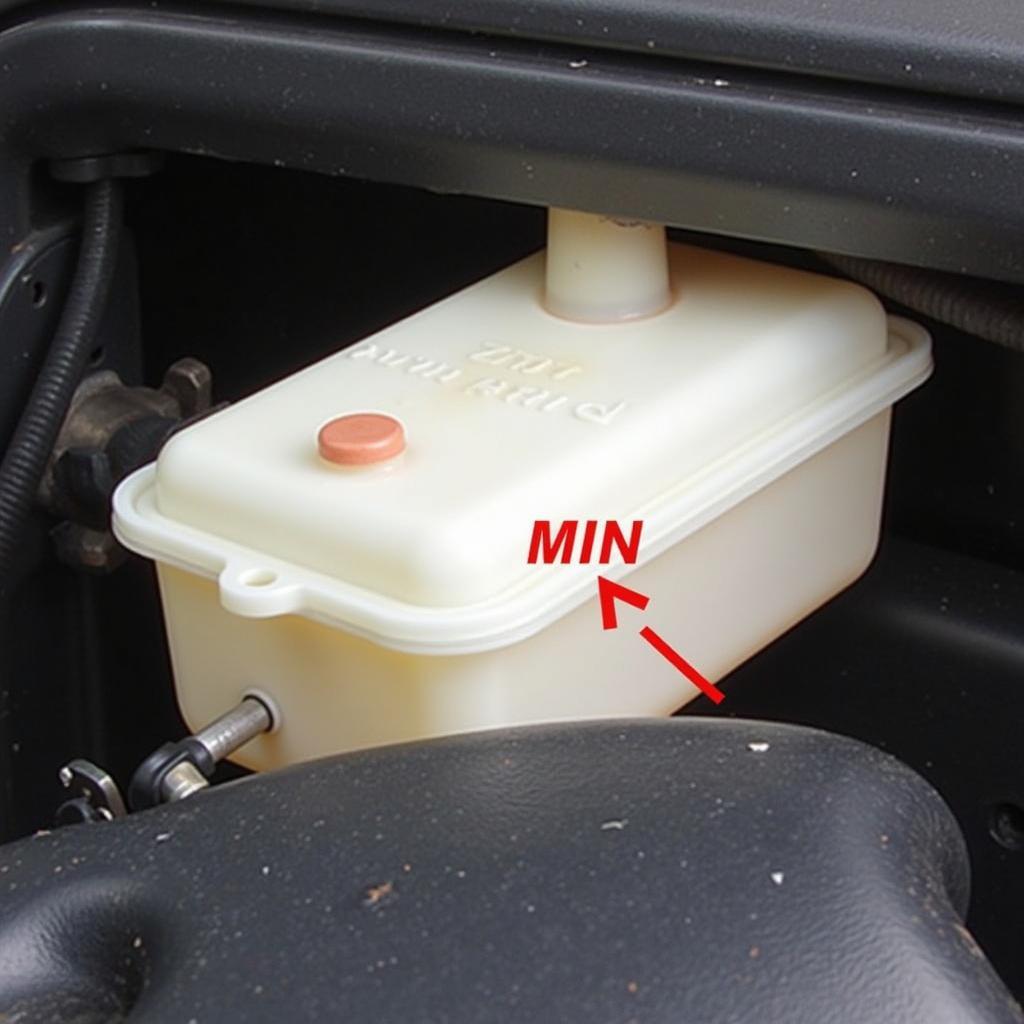The dreaded audi brake pad warning light illuminates your dashboard. But which pad is causing the issue? Understanding your Audi’s brake pad warning system can save you time, money, and potential headaches. This article will delve into the specifics of the “audi brake pad warning light which pad” question, offering practical advice and expert insights.
Knowing which brake pad is worn is crucial for targeted maintenance and repair. While the warning light indicates wear, it doesn’t pinpoint the exact location. This article will guide you through the process of identifying the culprit pad and understanding the intricacies of your Audi’s braking system. Let’s get started! You can find more information on Audi brake warning lights by checking out resources like those addressing the 2014 Audi A6 brake pad warning light.
Understanding Your Audi’s Brake Pad Warning System
Audi’s brake pad warning system relies on sensors embedded within the brake pads themselves. These sensors are small wires that become exposed as the brake pad material wears down. Once the sensor makes contact with the brake rotor, it completes a circuit, triggering the warning light on your dashboard. This system is designed to alert you before the pads wear down completely, preventing damage to the rotors and ensuring safe braking performance.
Have you ever encountered an Audi A3 parking brake warning? While different, understanding these warnings is part of overall vehicle maintenance.
One common misconception is that the warning light always signifies that all brake pads are worn. This isn’t necessarily true. Most Audis have a sensor on at least one front and one rear brake pad. The illuminated warning light means that at least one pad, equipped with a sensor, has reached its wear limit.
 Audi Brake Pad Sensor Location
Audi Brake Pad Sensor Location
Diagnosing the Worn Brake Pad
So, how do you determine which pad is triggering the warning light? Visual inspection is the first step. Jack up your Audi securely and remove the wheels one at a time. Examine the brake pads through the caliper. Look for a thin wire protruding from the backing plate of the pad. If the wire is worn down and close to or touching the rotor, that’s your culprit.
Sometimes, even with a visual inspection, it might be challenging to pinpoint the exact pad. In such cases, consulting a qualified mechanic specializing in Audi vehicles is recommended. They can quickly identify the worn pad using professional diagnostic tools. Remember, addressing brake issues promptly is crucial for your safety.
“Regular brake inspections are paramount,” advises Michael Schmidt, a veteran automotive technician with over 20 years of experience specializing in European vehicles. “Catching brake pad wear early can prevent costly repairs down the line.”
What if the Warning Light Stays On After Replacing Brake Pads?
Sometimes, the warning light might stay on even after replacing the worn brake pads. This could be due to a faulty sensor, a wiring issue, or a problem with the brake pad warning light system itself. If this happens, a diagnostic scan can pinpoint the exact cause.
More information on Audi’s yellow brake warning light can be found on specialized sites.
You might also find helpful information regarding Audi A4 warning lights brake on our website. Additionally, you can learn about similar brake issues in other vehicles, such as the 2009 BMW R1200GS brake failure warning light.
Conclusion
Identifying the worn brake pad when your Audi’s warning light comes on requires a bit of detective work. While the light itself doesn’t pinpoint the exact location, visual inspection is often sufficient. However, consulting a qualified mechanic is always recommended for a definitive diagnosis. Remember, timely brake maintenance is crucial for your safety and the longevity of your vehicle. Don’t ignore that “audi brake pad warning light which pad” question – address it promptly!


